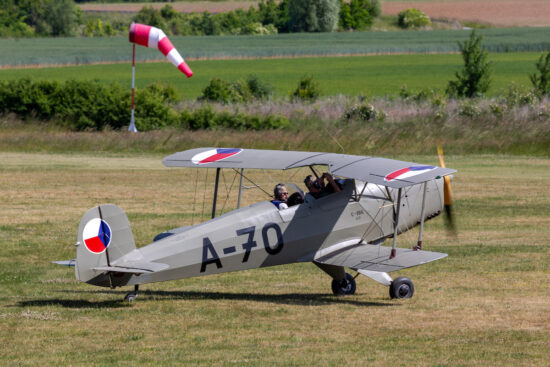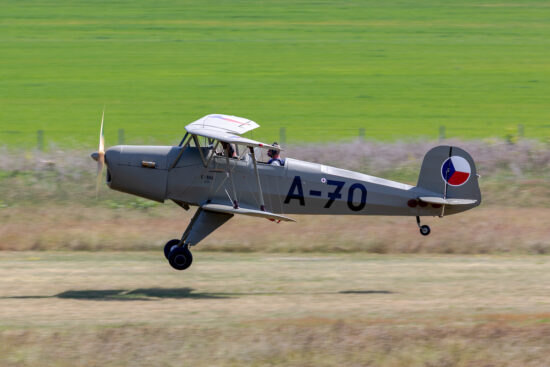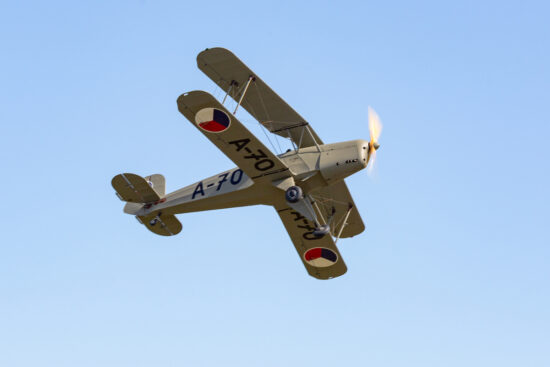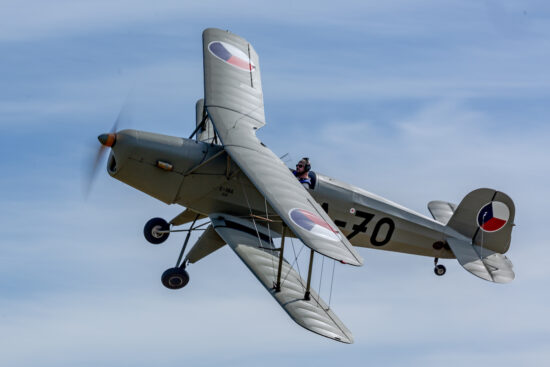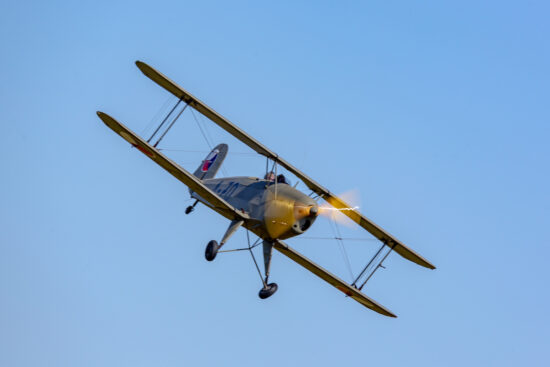Aero C 104
The Aero C-104 aircraft is a Czechoslovak single-engine, two-seat training aircraft. It is a continuation of the development of the German aircraft Bücker Bü 131 Jungmann, whose production was forcibly introduced by Germany during World War II and the occupation of Czech lands at the Aero factory in Prague. The original Bücker Bü 131 was designed by Ing. Carl Bücker, and its first flight took place in 1934.
The Bücker Bü 131 was not only produced in Germany but also in several other countries through licensed manufacturing, including Japan, Spain, and Switzerland. In Czechoslovakia, the Tatra company purchased the license for its production in 1935. By the German occupation of Czechoslovakia, it managed to produce 35 units of these aircraft, including its own production of licensed Hirth engines.
In the spring of 1939, the Germans decided to stop production at Tatra and continue at the Aero factory in Prague for the needs of the Luftwaffe. After the war ended, production continued for the Czechoslovak Air Force. In 1946, a Czechoslovak engine, Walter Minor 4-III with a power of 77 kW (105 horsepower), was installed in the fuselage of the aircraft now produced under the name Aero C 4. This version was designated as Aero C 104. A total of 260 units were produced. Both types, C 4 and especially C 104, were initially used by the Czechoslovak military air force for basic and continuing pilot training and were gradually transferred to Aero clubs.
Aero C 104, serial number 237, was manufactured in 1947 at the Aero factory in Prague Vysočany. It was subsequently taken over by the Ministry of Defense. After ending service within the Czechoslovak Military Air Force, it was handed over in 1954 for further use to the Aeroclub Ústí nad Labem, where it flew with the registration OK – AXT, here it flew until August 6, 1965, when it was handed over to Aeroclub Raná, from where it was transferred on April 29, 1968, to the emerging collections of the Aviation Museum Kbely. It was never displayed but ended up in storage. From there, it was loaned to the Czechoslovak national aerobatic team in Moravská Třebová on January 16, 1985, where it was put back into flying condition. It was reflown on May 25, 1986, with the registration OK – RXE in an imaginary civil blue – red coloring. The last flight with this aircraft in the 1986 colors was made on April 1, 2021, by the crew Michal Bajzik and Milan Mikulecký. The aircraft had flown a total of 630 hours and 56 minutes with a total of 1473 take-offs.
The owner of the aircraft is still the Military Historical Institute Prague, and the new operator under contract is the family foundation TMFC. The latter also paid for and secured a complete overhaul of the aircraft. During the work, all fabric coverings were removed, wooden parts were repaired, metal parts were defectoscopically examined, and all paint was removed. In memory of one of the academics, later Major Jan Srb, we chose as a model for the new coloring of the aircraft a plane that flew at the Military Air Academy in Hradec Králové after World War II.
During the reconstruction, we definitively determined the color of the post-war production Aero C 104 aircraft as RLM 02 (wartime stocks of German colors were used by the Aero factory until 1948) and Czechoslovak colors Avion 1810, 2323, and 4550 for insignia and tactical markings according to the post-war color chart of TEBAS, a post-war supplier of paints for the Czechoslovak aviation industry and air force.
After completing all the work and a successful flight on May 18, 2023, by Přemysl Vávra, the aircraft is now based at the Prague Točná airport, where other historic TMFC aircraft fly from.
Technical data
Engine: Walter Minor 4-III
Power: 77 kW (105 HP)
Wingspan: 7.4 m
Length: 6.76 m
Empty weight: 390 kg
Take-off weight: 680 kg
Maximum speed: 185 km/h
Service ceiling: 4300 m
Range: 650 km
You can follow the reconstruction story and regular operations of Aero C 104 OK-RXE here.
